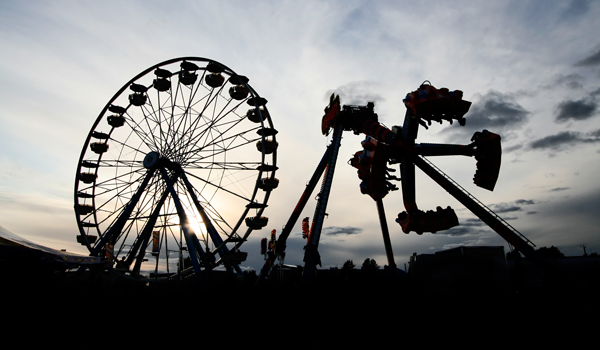Killer Thrills: How Safe Are Amusement Parks?

August is one of the most popular months for visiting amusement parks, but recent accidents have shined a spotlight on a long-debated issue: How well are these parks monitored when it comes to safety?
From rollers coasters to bumper cars and Ferris wheels, amusement park rides attract massive crowds, with an estimated annual attendance of nearly 300 million at the more than 420 fixed-site theme parks in the United States, according to 2008 data from the International Association of Amusement Parks and Attractions.
How safe are the rides?
"The likelihood of being seriously injured requiring overnight hospitalization on a permanently located amusement park ride in the U.S. is one in nine million," said IAAPA representative Colleen Mangone. You are much more likely to be killed by a bee sting, a snake bite, fireworks, tornadoes, electrocution and even dogs, than to be seriously hurt in one of these parks. [Odds of Dying]
Accidents do happen, however, as reports of recent incidents at amusement parks show. On Aug. 11, a miniature train tipped over in Tiny Town, a scaled-down replica of an Old West town in Denver, Colo., injuring more than a dozen people.
On July 30, a 12-year-old girl was critically injured after she fell 140 feet (43 meters) onto a cement floor because a safety net had not been raised on the Terminal Velocity free-fall ride at the Extreme World amusement park in Lake Delton, Wis.
Three children were hospitalized for their injuries on July 22, when they were struck by loose debris flying off of the Tidal Wave ride at Trimper's Rides and Amusements in Ocean City, Md., according to state amusement park ride safety inspectors.
Sign up for the Live Science daily newsletter now
Get the world’s most fascinating discoveries delivered straight to your inbox.
Who's in charge of amusement park safety?
Some states have inspectors that regulate and examine amusement park rides but not all states are required to. There are five states (Montana, Utah, Alabama, North Dakota and South Dakota) that have no established regulations whatsoever for the safety of amusement rides, according to the U.S. Consumer Product Safety Commission (CPSC).
Currently, no federal agency has authority to set uniform safety standards for amusement park rides, investigate serious accidents at permanent facilities or require the correction of hazards that may lead to rider injuries, according to Saferparks, a non-profit public service organization founded to prevent amusement ride accidents.
The CPSC is authorized to investigate accidents and work with manufacturers to correct ride defects, but only on traveling carnival rides. Rides at major theme and water parks are exempt from federal safety oversight due to what is referred to by those in the industry as the "roller coaster loophole," in the Consumer Product Safety Act of 1981.
The loophole prohibits the CPSC from regulating the safety of rides that are fixed to a specific site. Only rides that are mobile (such as those at traveling fairs and carnivals) fall under CPSC jurisdiction. This leaves the monitoring and inspection of rides at fixed-site amusement park (including the largest ones, such as Disney World and Universal Studios Florida) to state or local authorities.
And because state and local budgets vary, the quality of oversight and the strictness of regulations including inspection protocols, insurance and licensing requirements also vary. While traveling amusement parks are required to inform the government of their accident rates, fixed-site parks are not, according to the CPSC.
"When it comes to amusement park safety, parents are the ones taken for a ride when they assume all rides are subject to the same safety regulations," said Congressman Edward Markey (D-Mass.) in a statement. "The unfortunate truth is that the federal government is actually prevented from taking action to keep fixed-site rides safe, leaving a gigantic 'regulatory black hole' for park visitors, raising the risk of more serious injuries and even deaths aboard the rides."
Got a question? Email it to Life's Little Mysteries and we'll try to answer it. Due to the volume of questions, we unfortunately can't reply individually, but we will publish answers to the most intriguing questions, so check back soon.










